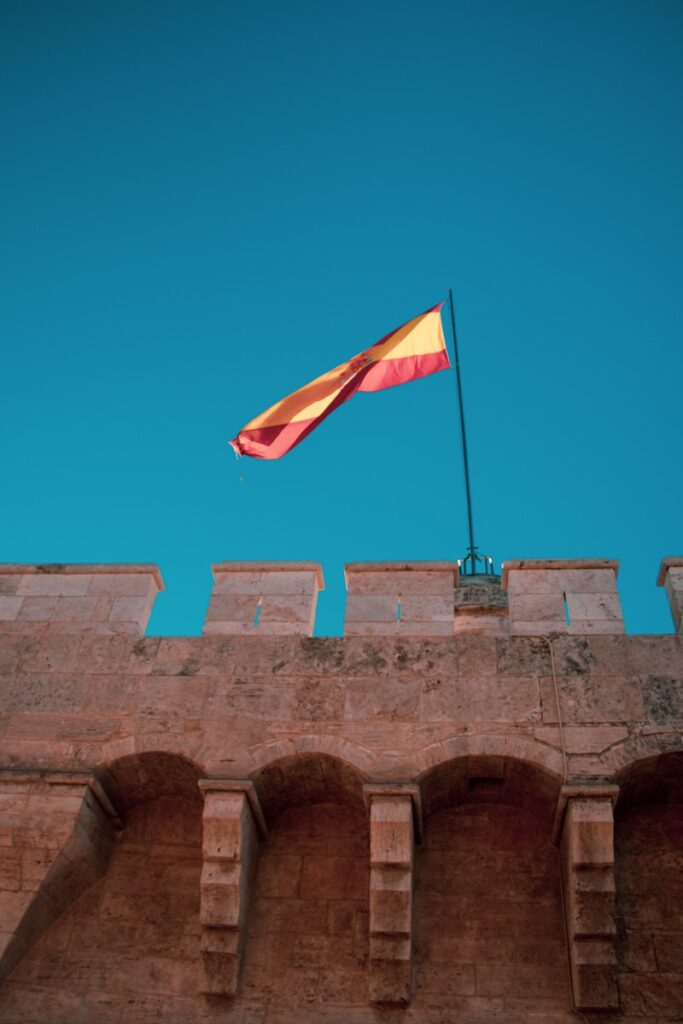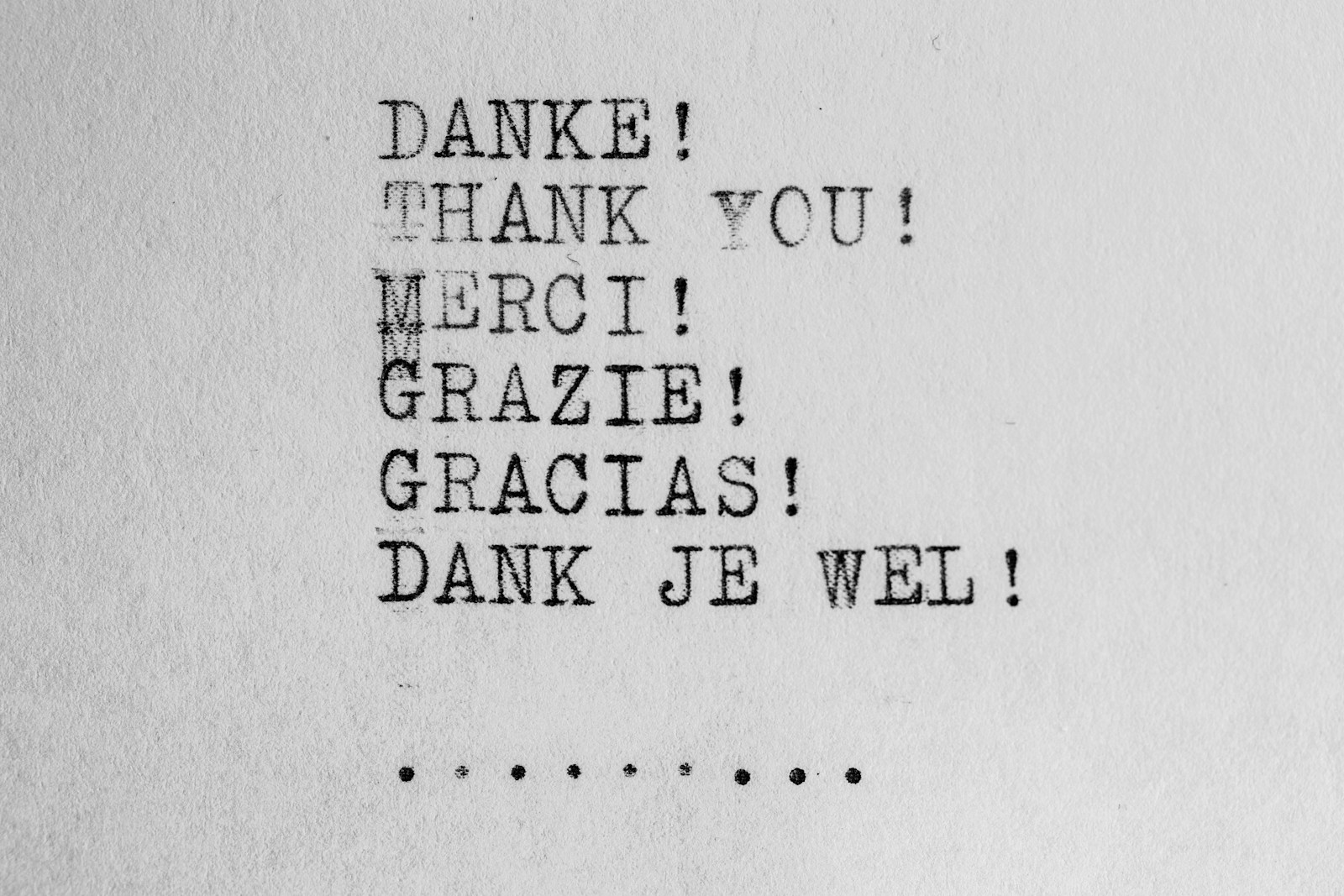How to Respond to Gracias in Spanish: Key Phrases and Tips
Imagine you’re on a sun-soaked vacation in Spain, enjoying the vibrant culture and delicious tapas. You’ve just complimented a local on their beautiful shop, and they smile warmly, saying, “Gracias.” Now, you’re stuck. You want to respond in a way that’s polite and authentic, but your mind’s drawing a blank.
Don’t worry, you’re not alone. Many of us have found ourselves in this exact scenario, feeling a bit like a deer caught in the headlights. The good news? Responding to “Gracias” doesn’t have to be a challenging job. With a few simple phrases up your sleeve, you’ll navigate these social exchanges like a pro.
Understanding “Gracias” in Spanish Context
Let’s talk about a word you’ll hear everywhere in Spanish-speaking countries: gracias. This simple term means “thank you,” but its usage and importance go far beyond just polite manners.
Meaning and Importance of “Gracias”
Gracias is the go-to phrase for expressing gratitude. Its versatility allows it to fit into various situations, whether you’re thanking someone for help, support, or kindness. Imagine you’re in Spain, and a local offers you directions when you’re lost. Responding with gracias instantly conveys your appreciation.
Here’s what makes gracias special:
- Versatility: Use it for any act of kindness, whether it’s receiving a gift, compliment, or assistance.
- Frequency: It’s in the top 100 high-frequency Spanish words, so learning it is essential.
- Adaptability: Fits seamlessly into both casual and formal interactions.
When and How Spanish Speakers Use “Gracias”
Spanish speakers weave gracias into everyday conversations, and knowing when and how to use it can make your interactions smoother.
Formal and Informal Settings
Various Situations
Situation | Example Sentence |
|---|---|
Receiving Help | “¡Gracias por tu ayuda!” |
Receiving a Gift | “¡Gracias por el regalo!” |
Receiving a Compliment | “¡Gracias! Me alegra oír eso.” |
Receiving Information | “¡Gracias por la información!” |
By understanding the context and flexibility of gracias, you’ll not only express gratitude appropriately but also connect better with Spanish speakers on a personal level. Ever wondered why such a simple word can carry so much weight? It’s because gratitude is a universal language, and gracias is your key to revealing it in Spanish-speaking cultures.
Top 5 Common Responses to “Gracias” in Spanish

Responding to gracias is more than just polite; it helps build connections with Spanish speakers. Let’s discover some versatile responses.
“De nada” – You’re Welcome
Pronunciation Guide
Spanish | Pronunciation |
|---|---|
De nada | /deh NAH-dah/ |
Usage Examples
Imagine you just helped a friend carry groceries. They say, “Gracias por la ayuda.”, and you reply, “De nada.” Simple, right? It’s the equivalent of saying “You’re welcome.”
“Por nada” – It’s Nothing
Pronunciation Guide
Spanish | Pronunciation |
|---|---|
Por nada | /pohr NAH-dah/ |
Usage Examples
You’ve just fixed a colleague’s computer issue, and they thank you. You respond, “Por nada.” It’s a casual, breezy way to say “It’s nothing.”
“No hay de qué” – Don’t Mention It
Pronunciation Guide
Spanish | Pronunciation |
|---|---|
No hay de qué | /noh ahy deh KAY/ |
Usage Examples
Picture this: you’ve lent your neighbor a cup of sugar. Their thanks met with your “No hay de qué.” It’s like saying, “Don’t mention it,” emphasizing that it took no trouble.
“Con gusto” – With Pleasure
Pronunciation Guide
Spanish | Pronunciation |
|---|---|
Con gusto | /kohn GOO-stoh/ |
Usage Examples
Your friend appreciates your help with their project. They say, “Gracias por tu ayuda.” You smile and respond, “Con gusto.” This response radiates warmth, showing you’re happy to help.
“El placer es mío” – The Pleasure is Mine
Pronunciation Guide
Spanish | Pronunciation |
|---|---|
El placer es mío | /el plah-SEHR es MEE-oh/ |
Usage Examples
You just attended a delightful dinner at a friend’s house. As you leave, they thank you for coming. You respond, “El placer es mío.” This elegant phrase is perfect for formal settings.
Formal Ways to Respond to “Gracias” in Spanish

Ever found yourself in Spain, wondering how to respond to a heartfelt Gracias? Let’s jump into some formal ways to keep the conversation smooth and respectful.
“A la orden” – At Your Service
When someone says Gracias, responding with A la orden shows you’re readily available to help. Picture this: you’re at a business meeting in Madrid, and a colleague thanks you for your presentation. You reply with A la orden – it conveys professionalism and readiness to assist further.
“Para Servirle” – At Your Service (More Formal)
Take A la orden and ramp up the formality a notch. Para servirle is perfect when addressing authority figures or in professional settings. Imagine a scenario where you’re interacting with a senior executive. They acknowledge your hard work with a Gracias, and you respond with Para servirle. This subtle phrase showcases utmost respect and courtesy.
“Es un Placer” – It’s a Pleasure
There’s something warm about saying Es un placer, right? It’s suitable for those occasions where you want to express genuine happiness in assisting someone. You’re at a formal dinner, and your host thanks you for your help with the event. Es un placer not only acknowledges the gratitude but also elevates the cordiality of the moment.
When to Use Formal Responses
Deciding when to use these formal phrases can be crucial. Here’s a quick guide:
Scenario | Recommended Response |
|---|---|
Business Meeting | A la orden |
Interaction with Authority | Para servirle |
Formal Social Gathering | Es un placer |
Why stick to formalities, you ask? While friendly, casual exchanges have their place, formal responses respect cultural nuances and social hierarchies. It’s all about connecting with people in ways they value, and yes, they’ll notice and appreciate your effort.
So, next time you’re thanked with a heartfelt Gracias, you’ll know exactly what to say, making your interactions both respectful and memorable.
Casual and Friendly Responses to “Gracias”

Responding to “Gracias” with casual and friendly phrases can make your interactions feel more personal and engaging. Here are some informal ways you can respond to show appreciation without sounding too formal.
“No es nada” – It’s Nothing
“No es nada” literally translates to “it’s nothing.” When a friend thanks you for helping move furniture, respond with “No es nada”. This downplays your assistance, signaling that it was no trouble. The phrase helps maintain a laid-back atmosphere and adds a touch of kindness.
“No te preocupes” – Don’t Worry About It
With “No te preocupes”, you tell someone not to worry about their expression of gratitude. Imagine your sibling thanking you for fixing their computer. By replying “No te preocupes”, you’re indicating that helping was no big deal. It assures them that you’re happy to assist without any fuss.
“Cuando quieras” – Anytime
“Cuando quieras” means “anytime.” Use this when you want to express your readiness to help whenever needed. For example, a friend says thanks for the loan of a book. If you reply with “Cuando quieras”, it shows you’re always there for them. This phrase fosters a sense of ongoing support and availability.
Using These Responses with Friends and Family
These casual responses work best with friends and family. They keep the tone light and friendly, suitable for close relationships. Whether it’s a small favor or a bigger help, a casual response like “No es nada”, “No te preocupes”, or “Cuando quieras” adds warmth and relatability to your interactions.
Spanish Phrase | Translation | Contextual Use |
|---|---|---|
No es nada | It’s nothing | Downplay the help or favor provided |
No te preocupes | Don’t worry about it | Convey the help was no big deal |
Cuando quieras | Anytime | Express you’re always available to help |
These friendly replies help you connect meaningfully. They show that you care and make you approachable, enhancing your communication in a heartfelt manner.
Regional Variations in Responding to “Gracias”

When traveling through Spanish-speaking countries, you’ll quickly notice how responses to “Gracias” vary by region. It’s fascinating to see how these variations reflect local customs and culture. Let’s jump into some regional differences.
Spain: “De Nada” vs “No Hay De Qué”
In Spain, two common responses to “Gracias” are “De nada” and “No hay de qué”. Both mean “You’re welcome,” but they carry different tones. “De nada” translates to “It’s nothing,” making it a straightforward and polite response. You might use it in many settings, from cafes to offices.
Meanwhile, “No hay de qué” implies “There’s nothing to thank for.” This phrase adds modesty, often used when you want to downplay the favor you did. Picture a local helping you with directions in Madrid; they’d likely say “No hay de qué”, making you feel it’s genuinely no trouble.
Mexico: “De Qué” and “Por Nada”
Mexico has its unique spin. Here, you’ll frequently hear “De qué” and “Por nada”. “De qué” is a shortened, casual version of “No hay de qué.” Imagine grabbing street tacos and thanking the vendor. A friendly “De qué” is a perfect reply, maintaining a relaxed vibe.
“Por nada” translates to “For nothing,” akin to “De nada” but slightly more personal and kind-hearted. It’s what you’d hear when someone, perhaps an old friend, insists their help was truly no bother.
South America: “Dale” (Argentina) and “Chevere” (Colombia)
South America showcases even more regional diversity. In Argentina, you’ll often hear “Dale” in response to “Gracias”. Although “Dale” means “Go ahead” or “Okay,” in this context, it conveys a casual, friendly acknowledgment. Buenos Aires locals might use “Dale” at a café when you express gratitude for service.
Colombians, on the other hand, have a colorful term: “Chevere.” While it generally means “Cool” or “Great,” Colombians use it to respond to thank yous, adding an upbeat tone to their hospitality. Think of chatting with a vendor in Bogota who helps you with a purchase and responds with “Chevere”—it’s warm and spirited.
Understanding Regional Preferences
These variations highlight the beauty of Spanish-speaking cultures. Adapting your responses can enrich your interactions and show respect for local nuances. Why not learn a few of these regional phrases and use them during your travels? Experimenting with local customs can make your experience more immersive and connected.
Region | Common Responses | Contextual Use |
|---|---|---|
Spain | De nada, No hay de qué | Polite reply, downplaying help |
Mexico | De qué, Por nada | Casual, kind-hearted interactions |
Argentina | Dale | Friendly acknowledgment in everyday scenarios |
Colombia | Chevere | Upbeat and spirited interactions, street vendors, etc. |
Understanding these regional preferences not only enhances your language skills but also deepens your cultural appreciation, making every “Gracias” exchange meaningful.
Responding to Different Levels of Gratitude

Understanding how to respond to various forms of gratitude in Spanish can deepen your connections and enhance your communication skills. Let’s explore how to handle different expressions of thanks, tailoring your responses to match the sentiment conveyed.
Basic “Gracias” vs “Muchas gracias”
When someone says “Gracias” (Thanks), it’s a simple expression of gratitude. Typical responses include “De nada” (You’re welcome) or “No hay de qué” (No problem). These replies are straightforward and appropriate in most casual interactions.
Phrase | Translation | Context |
|---|---|---|
Gracias | Thanks | Everyday gratitude |
De nada | You’re welcome | Informal and polite response |
No hay de qué | No problem | Informal and reassuring reply |
For “Muchas gracias” (Thank you very much), the gratitude level increases. Reflect this sentiment back with “Con mucho gusto” (With pleasure) or “Es un placer” (It’s a pleasure). These phrases show you’re genuinely happy to help.
Phrase | Translation | Context |
|---|---|---|
Muchas gracias | Thank you very much | Deeper gratitude for help or favors |
Con mucho gusto | With pleasure | Warm and welcoming response |
Es un placer | It’s a pleasure | Shows genuine happiness to assist |
Responding to “Mil gracias” (A thousand thanks)
Receiving “Mil gracias” (A thousand thanks) implies immense gratitude, often for significant favors or help. Your response should match this intensity. You can say “No tienes por qué” (There’s no need to thank me) or “A la orden” (At your service). These responses show you’re honored to have assisted and ready to help again.
Phrase | Translation | Context |
|---|---|---|
Mil gracias | A thousand thanks | Very high gratitude for substantial assistance |
No tienes por qué | There’s no need to thank me | Humble reply, downplays your effort |
A la orden | At your service | Indicates readiness to help again |
Appropriate Responses for Extreme Gratitude
Sometimes, gratitude reaches extremes, and you encounter phrases like “Eres un ángel” (You’re an angel) or “No sé cómo agradecértelo” (I don’t know how to thank you). Respond with something equally heartfelt, like “Para eso estamos” (That’s what we’re here for) or “Me alegra haberte ayudado” (I’m glad I could help). These phrases acknowledge the gratefulness and reinforce your willingness to support.
Phrase | Translation | Context |
|---|---|---|
Eres un ángel | You’re an angel | Extreme appreciation for a significant favor |
No sé cómo agradecértelo | I don’t know how to thank you | Shows deep, almost overwhelming, gratitude |
Para eso estamos | That’s what we’re here for | Warm, friend-like reassurance that you’re always happy to help |
Me alegra haberte ayudado | I’m glad I could help | Further emphasizes your pleasure in being helpful |
Tailoring your responses to the level of gratitude expressed makes your interactions more sincere and appreciated. These nuanced replies enrich your conversations and deepen your connections across Spanish-speaking cultures.
Non-Verbal Ways to Acknowledge “Gracias”

Ever been in that moment when someone says “Gracias” and words just don’t seem enough? Let’s jump into some genuine non-verbal ways to say “you’re welcome” in Spanish-speaking cultures.
Smiling and Nodding
A simple smile and nod can speak volumes. Picture this: you’re in a quaint Spanish café, you’ve just handed a local a napkin they dropped, and they say “Gracias”. Instead of stumbling over your Spanish, you flash a warm smile and give a gentle nod. This is universally appreciated and reinforces kindness without uttering a word. Why does this work? Because it’s a basic human connection, showing you acknowledge and appreciate their thanks.
Hand Gestures in Spanish-speaking Cultures
Hand gestures are culturally rich and nuanced. Imagine you’re in Mexico, and a vendor thanks you with “Gracias” after a small purchase. A light, courteous wave or a thumbs-up shows politeness and recognition. But be mindful, as gestures can vary regionally.
Here’s a quick rundown:
Gesture | Meaning | Where it’s common |
|---|---|---|
Thumbs-Up | Good job/Thank you | Latin America |
Open Palm | Welcome/Positive | Various countries |
Right-Hand to Heart | Heartfelt thanks | Spain |
Combining Verbal and Non-Verbal Responses Effectively
Sometimes blending verbal with non-verbal responses can create a deeper connection. Think about this: a friend helps you navigate the bustling streets of Buenos Aires. They say “Gracias”, and you respond with “De nada” while placing your hand on your chest. It merges the spoken language with an emotional gesture, showcasing sincere gratitude.
Why mix the two? It layers your interaction, making it warmer and more personal. It’s not just about the words or the gestures alone but the harmony between them.
Next time you hear “Gracias”, remember these non-verbal cues. They’re simple yet powerful ways to express your appreciation in any Spanish-speaking setting.
Common Mistakes to Avoid When Responding to “Gracias”

Responding to “Gracias” might seem simple, but there are some common pitfalls you should avoid. Knowing these can help you communicate more effectively and show respect in Spanish-speaking cultures.
Using “Gracias” as a Response
You might think using “Gracias” as a response is polite, but it’s actually confusing. When someone says “Gracias” to you, they’re thanking you, and simply echoing it back doesn’t acknowledge their gratitude. Instead, use responses like “De nada” (You’re welcome) or “Con gusto” (With pleasure). This way, you show you understand their appreciation and the conversational flow continues naturally.
Mispronouncing Common Responses
Pronouncing Spanish correctly is crucial for effective communication. Mispronunciations can lead to misunderstandings and might come off as disrespectful. For instance, saying “De nadda” instead of “De nada” can confuse listeners. Practice saying common responses out loud. Here are some examples:
Spanish Phrase | Correct Pronunciation |
|---|---|
De nada | deh NAH-dah |
Con gusto | con GOO-stoh |
No hay de qué | noh eye deh keh |
Get comfortable with these pronunciations so you can respond confidently and clearly.
Choosing Inappropriate Formality Levels
Formality matters in Spanish, just like in English. Using a too casual response in a formal setting can seem disrespectful, while overly formal phrases might feel out of place among friends. For example, “Es un placer” (It’s my pleasure) works well in formal situations like business meetings, but using “No es nada” (It’s nothing) is better for casual interactions. Ask yourself, would you say “You’re welcome” the same way to your boss as to your friend? Probably not. Here’s a quick guide:
Context | Formal Response | Informal Response |
|---|---|---|
Business Meeting | Es un placer | No hay problema |
With Friends/Family | No te preocupes | Cuando quieras |
Keeping formality in mind helps you fit in culturally and makes your responses feel genuine.
By steering clear of these common mistakes, you’ll navigate Spanish conversations with greater ease and confidence.
Conclusion: Mastering the Art of Gratitude in Spanish
Mastering how to respond to “Gracias” not only improves your Spanish but also deepens your connection with Spanish-speaking cultures. By understanding the nuances of formal and informal settings, you can show respect and appreciation appropriately.
Avoiding common mistakes like mispronunciations and inappropriate formality levels will help you communicate more effectively. Remembering these tips will boost your confidence in everyday interactions, whether you’re in a business setting or chatting with friends.
So next time someone says “Gracias” to you, you’ll know exactly how to respond, making your conversations smoother and more enjoyable. Happy learning and ¡buena suerte!
Frequently Asked Questions
How should I respond to “Gracias” in Spain?
Common responses include “De nada” (You’re welcome), “No hay de qué” (There’s nothing to thank), “Un placer” (A pleasure), and “No es nada” (It’s nothing). Choose the response based on the context and formality level.
What are common mistakes to avoid when responding to “Gracias”?
Avoid using “Gracias” as a response, mispronouncing phrases like “De nada,” and selecting an inappropriate formality level. These mistakes can lead to misunderstandings or perceived disrespect.
How can I express gratitude in a formal setting?
In formal settings, opt for polite responses like “Es un placer” (It’s a pleasure), “No hay de qué” (There’s nothing to thank), or “Encantado/a” (Delighted). These show respect and professionalism.
Are there specific responses suitable for friends and family?
For informal interactions, use phrases like “No hay problema” (No problem), “No te preocupes” (Don’t worry), and “Está bien” (It’s okay). These convey friendliness and ease.
Why is understanding cultural nuances important when responding to “Gracias”?
Understanding cultural nuances helps ensure effective communication and respect in Spanish-speaking cultures. Using the right response in the right context prevents misunderstandings and fosters better relationships.






